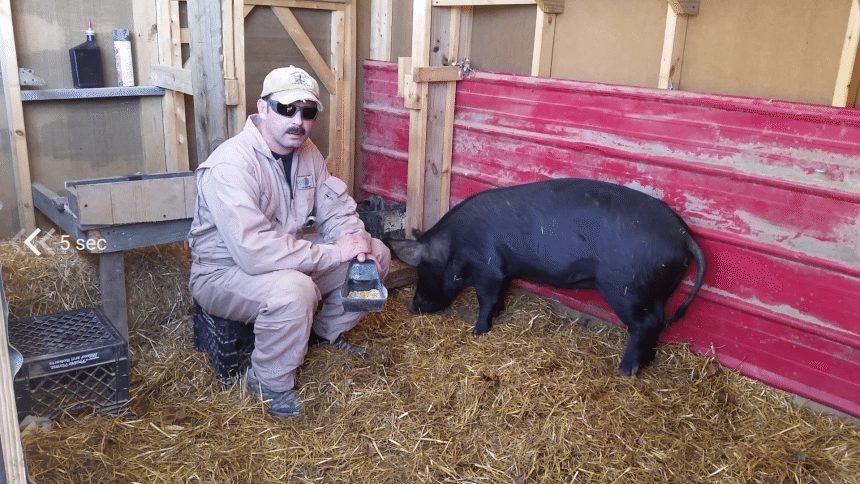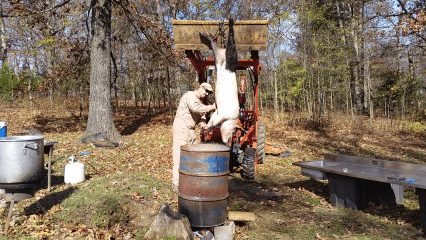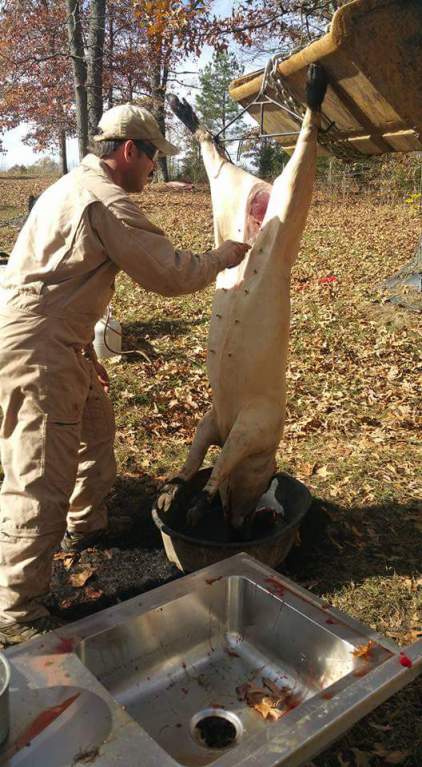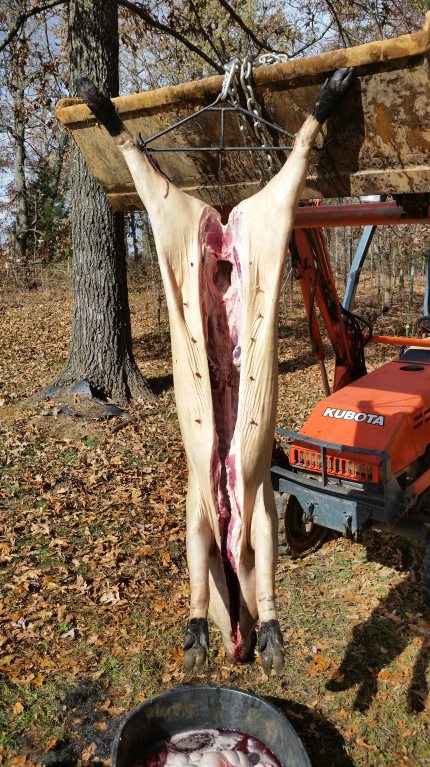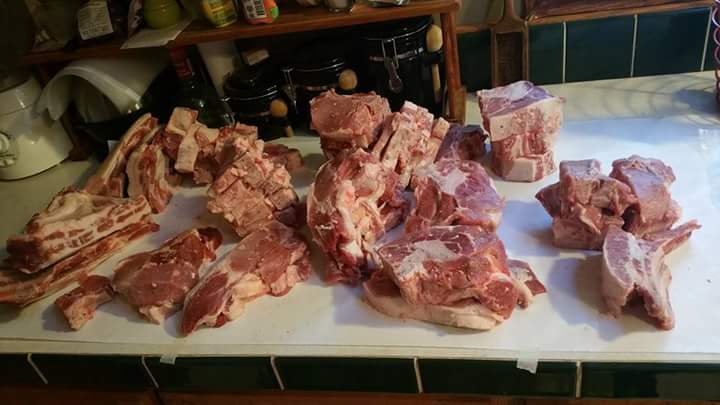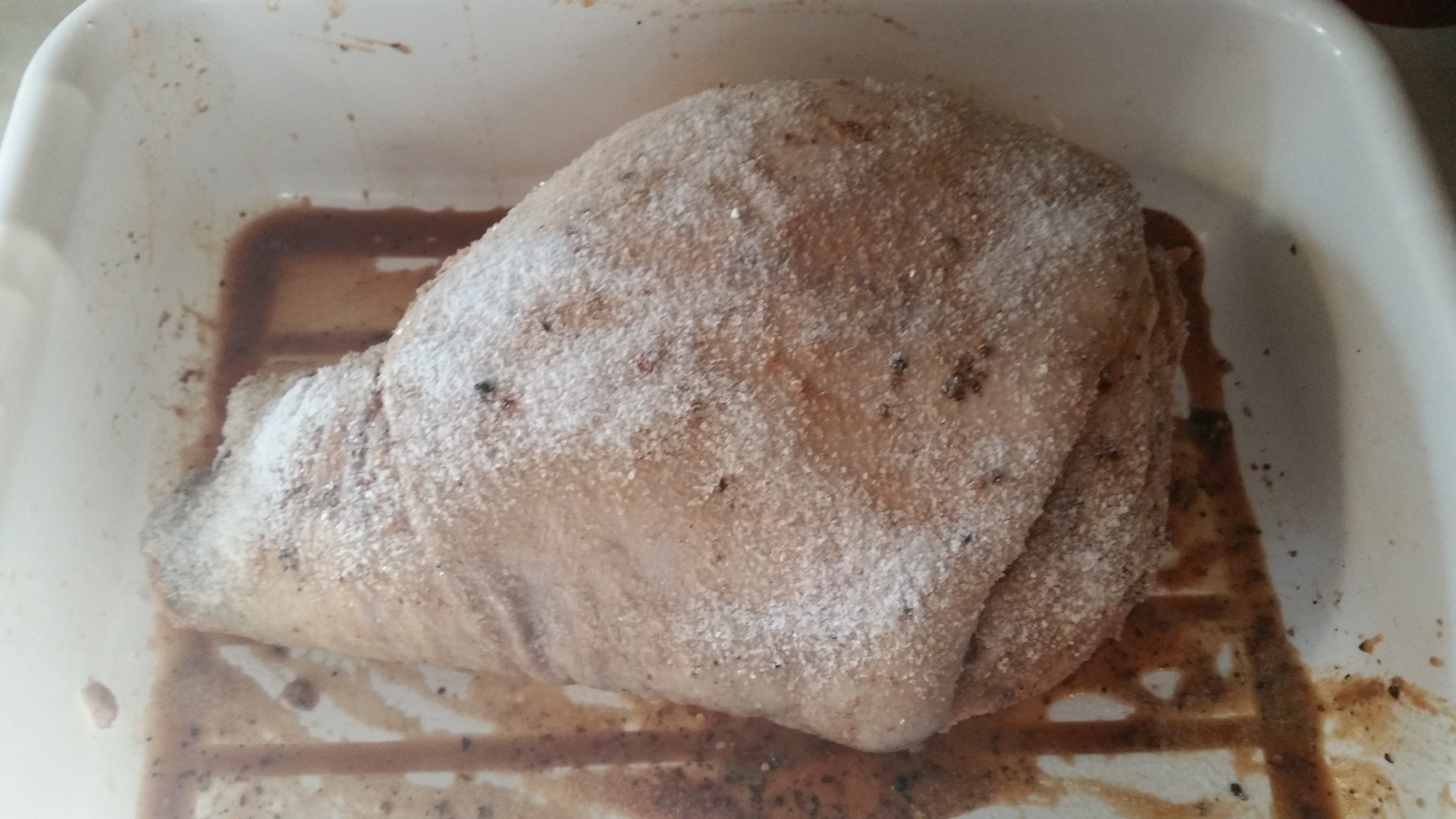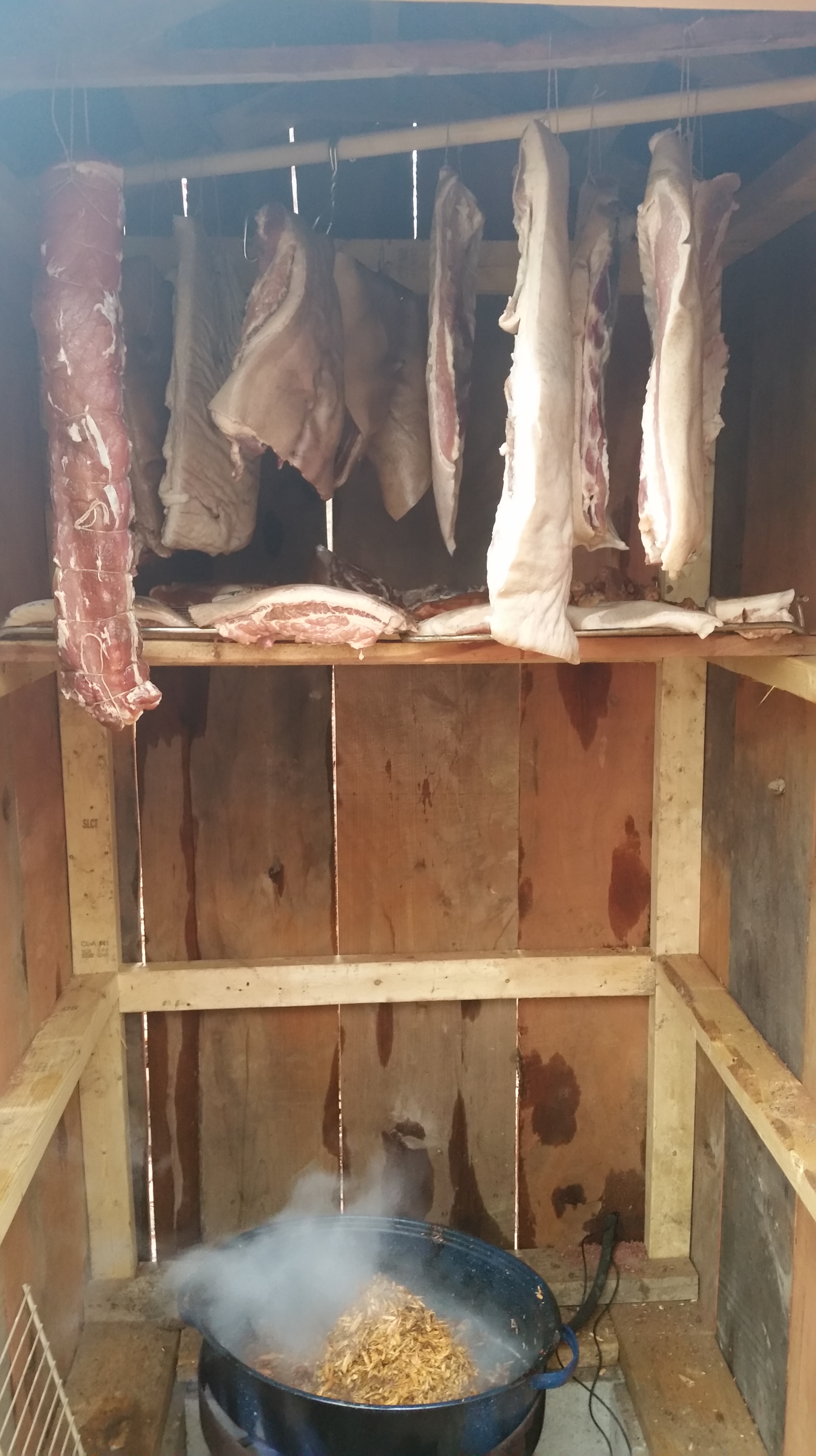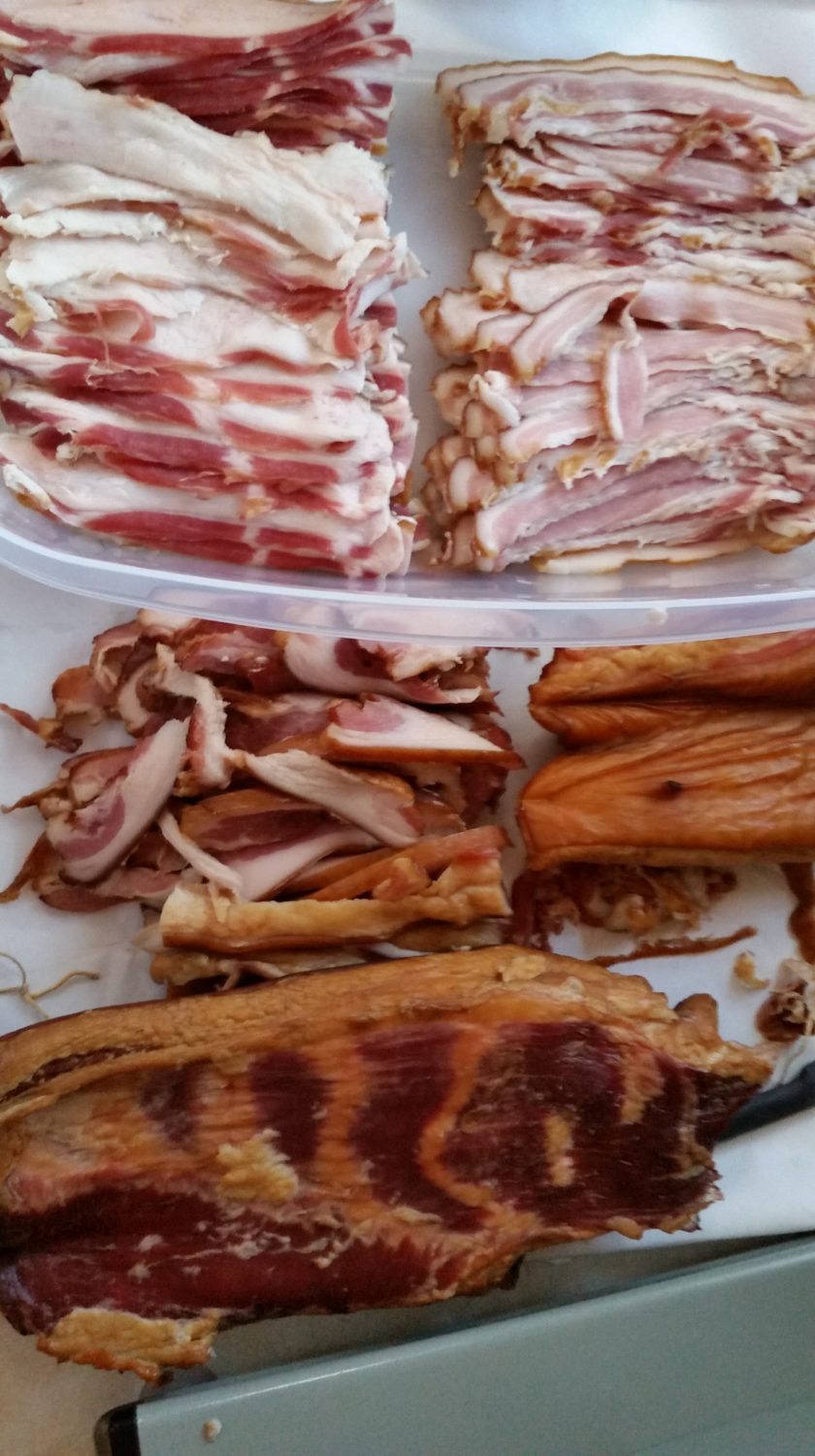We recently processed two sows here on the homestead. Traditionally “hog killin’” is done in fall when the temperature drops and stays that way. Thanks to modern refrigeration, we do it whenever we are about to run out of pork.
It is a time consuming process to take a larger animal from the hoof, to something the average person would recognize in the supermarket, especially of there are products that require further processing.
To start off, plan accordingly and gather all necessary supplies. Setup and cleanup are the most time consuming parts of this type of endeavor. Ensure the animal is healthy and isolate it from the others. I withhold food (not water) for 24 hours to lessen the volume in the digestive tract. This helps avoid accidental contamination of the carcass with bowel contents and makes the gutting process a little easier.
Since I like to cure bacon, ham and fat with the skin on, I scald the hogs then scrape the hair off. This adds more work but I feel it is worth it. It makes better use of the all the animal. We render the fat into lard for cooking and occasionally making soap. It’s also good to have some cubed up fat to grind into lean meat such as venison.
Scalding requires a vessel large enough to accommodate the size of the hog and a heat source. I use a propane burner to keep extra hot water handy and use wood to get the scalding barrel up to temperature. Around 150 degrees will loosen the hair from the follicle and make it easier to pull out.
If it gets to hot it will set the hair and you will be forced to skin it or shave the hair, which is even more labor intensive and leaves unsightly hairs in the follicle (this is why production pigs are white). I also use pine tar to make the hair sticky and lye to help remove the “scurf” and get a good clean scrape.
You are also going to need some knives, a sharpener, soap, water, some coolers with ice to cool and transport the meat. I also like to have a large pan to catch all the offal (guts) in. This keeps them of the ground and clean so you can sort through and harvest any organ meats and do an internal health inspection. The whole process can be done on a table by pouring the scalding water onto the carcass with burlap covering it to hold in the heat, but I assure you it is much easier if you have a rope and a tree or a tractor with a front loader to lift it up and down and dip it in the scald tank.
Once I have everything ready, I dispatch the pig and cut its carotid artery, I hang it by its Achilles tendons on a gambrel and let it bleed out. Then it’s time for the scald. I use bell scrapers to remove the hair and it takes some elbow grease, about 30 minutes worth. Once it is dehaired I gut it and then lay it on a table to part it out. If I am going to saw it up into chops I will leave the loin whole and put it in the chest freezer to harden and run it through the meat bandsaw.
With these two pigs, I made 25lbs of hot andouille sausage, 5lbs each of breakfast sausage, Italian sausage and peperoni, 40lbs of bacon, jowls, and fatback, one prosciutto and one country ham, 8lbs of capocola, two quarts of lard, and used 10lbs of fat and lean mixed with 20lbs of venison for 30lbs of summer sausage. I still have a Boston butt and two picnic shoulders in the freezer.
I could have easily taken them to a slaughter house but for the price they charge to do what I did myself, it’s not worth the time and energy saved. I bought these as piglets 2 years ago for $70 and raised several litters from each which I sold, ate or bartered. They have been on pasture and here recently, left over milk and whey. The bacon is so good, I can’t believe I let myself trade/sell/give some of it away, but I’ll make more.
I hope this was informative.
*The views and opinions expressed on this website are solely those of the original authors and contributors. These views and opinions do not necessarily represent those of Spotter Up Magazine, the administrative staff, and/or any/all contributors to this site.
All content from this article courtesy of our friend Jay Paisley (18z) ret. 5th Special Forces Group

